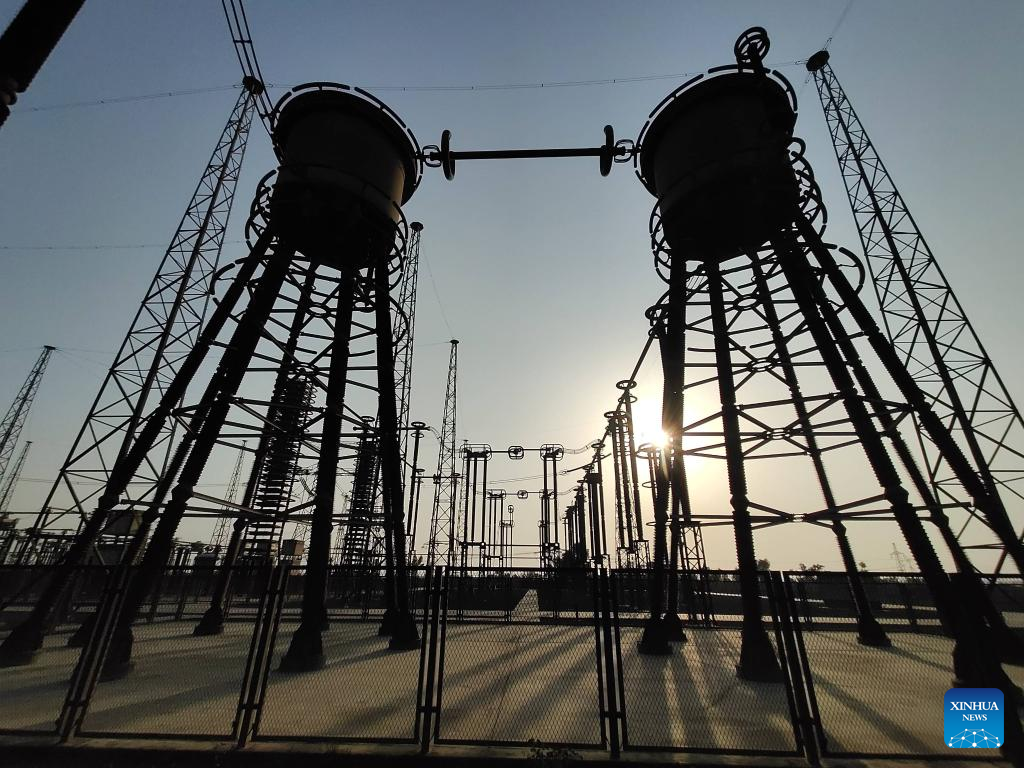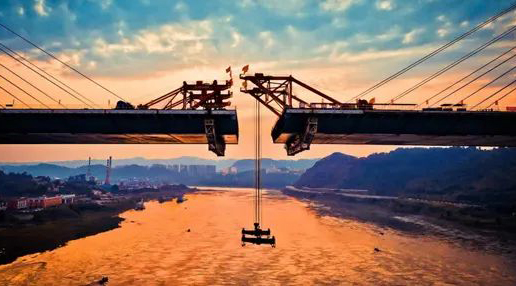CPEC transmission project fosters Pakistan's socio-economic development in green way

Photo taken on May 25, 2022 shows a view of the Lahore Converter Station of the ±660kV Matiari-Lahore high-voltage direct current (HVDC) transmission line project under the China-Pakistan Economic Corridor (CPEC) on the outskirts of Lahore, in Pakistan's eastern Punjab province.(Xinhua/Ahmad Kamal)
ISLAMABAD, June 4 (Xinhua) -- Muhammad Haris Mahmood, a 27-year-old Pakistani operation staff working at the Lahore Converter Station of the ±660kV Matiari-Lahore high-voltage direct current (HVDC) transmission line project, is elated on finding the project a great platform to polish his technical skills as he worked with his Chinese colleagues.
"I feel very proud to be working on this first HVDC project in Pakistan," Haris told Xinhua. "This project is a backbone of our transmission system. I am amazed by the reliability and stability this project has brought into our power system."
As a key project under the China-Pakistan Economic Corridor (CPEC), the Matiari-Lahore transmission line project was completed by the Pak Matiari-Lahore Transmission Company (Pvt) Limited and started its commercial operation in September of 2021. It has the maximum capacity to transmit electricity of 35 billion kilowatt-hours annually.
Haris is one of the 38 Pakistani employees who work with the 23 Chinese employees at the Lahore Converter Station all the year round to ensure the smooth operation of the project.
"We adopt a mentor-apprentice training methodology in our work, in which Chinese employees provide one-on-one workshops to Pakistani employees to help them quickly build their operation and maintenance skills," said Wu Mingxing, the Chinese operation and maintenance supervisor at the station.
From personnel training to equipment assistance, the 886 km-long Matiari-Lahore transmission line project has a lot of Chinese features. It was invested, constructed and is being operated by the State Grid Corporation of China in accordance with Chinese standards, with approximately 98 percent of the project's equipment being supplied by Chinese companies.
"The project is guided by the concept of green and low-carbon development which China is actively practicing. It has brought green and clean electricity to Pakistan," said Yuan Jie, deputy director of the construction, operation and maintenance department of the Pak Matiari-Lahore Transmission Company (Pvt) Limited.
"Large capacity, long-distance transmission, high efficiency and low losses are the four main advantages of the project, serving as a guarantee of minimizing its environmental impact," said Yuan.
Insufficient power has always been a pain point plaguing Pakistan's economic development. The transmission line project has resolved an electrical shortfall in about 9.3 million Pakistani households, and around 7,000 jobs had been created for the locals during the construction of the project.
"The transmission project has alleviated the job problem of a portion of the local low-income population, and its long-term benefits will be evident and beneficial to the Pakistani people," Usman Ali Ashraf, CEO of Kamran Steel in the country's eastern city of Lahore, told Xinhua.
"'Made in China' and 'Chinese technology' has taken root in Pakistan thanks to the transmission project, which is consistently helping enhance Pakistan's power grid and foster the country's socio-economic development," said Qu Wentao, station manager of the Lahore Converter Station.
"It is one of the best examples of China-Pakistan friendship through the Belt and Road Initiative (BRI) and the CPEC projects," he said.
Photos
Related Stories
- Green CPEC to play vital role in Pakistan's efforts against climate change
- Karot hydropower project under CPEC to generate eco-friendly, cheap electricity: Pakistani PM
- Infrastructure built under CPEC helps enhance regional connectivity: Pakistani official
- China, Pakistan jointly promote high-quality development of CPEC
- CPEC serves as flagship of development strategy of Pakistan: minister
- CPEC's 2nd phase to expedite socio-economic development of Pakistan: official
- Power projects under CPEC make Pakistan energy-sufficient: Pakistani newspaper
- CPEC brings prosperity to poor areas in Pakistan: official
- CPEC to revolutionize regional connectivity: Pakistani foreign minister
- China, Pakistan work hand in hand for green CPEC
Copyright © 2022 People's Daily Online. All Rights Reserved.









